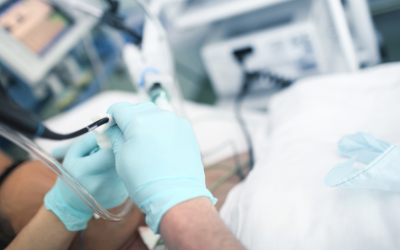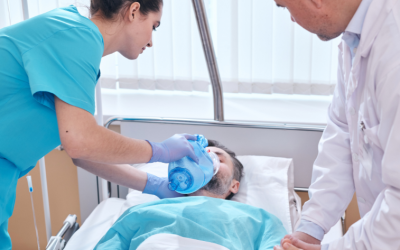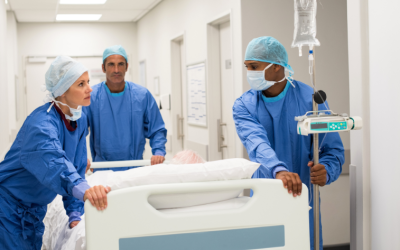The Hip Fracture Center at Fort Sanders Regional is a place patients go after “the break of a lifetime” knocks them off their feet – and it’s becoming known for its multi-disciplinary approach to treating what can become a fatal injury for many senior adults.
A hip fracture is a break in the upper quarter of the femur (thigh bone). In almost all cases, surgery to repair or replace the hip is required.
About 90 percent of hip fractures happen to people over 60. The average age of Hip Fracture Center patients is 79.7, although one patient celebrated her 100th birthday with the staff and her family.
The Hip Fracture Center combines the expertise of physicians, nurses, therapists, support staff, pharmacists, social services, and case management.
“There are also initial encounters with emergency services, radiology, laboratory, surgical services and other ancillary divisions,” says Deborah King, RN, coordinator of the Joint Spine Center and interim manager for 5 West orthopedics. “Basically the entire medical organization contributes to the care of the patient and their families.”
“It’s a dedicated program centered on proven principles relating to how to best manage patients with hip fractures, focusing on associated medical and social issues, as well as optimized surgical care,” said Dr. Brian Edkin, orthopedic surgeon who, along with Dr. Paul Yau, oversees the center’s operation. “The center has a team of experienced surgeons, many of whom specialize in hip surgery and hip fracture management.”
The center’s goal is twofold: reduce time to surgery for elderly patients who suffer a fracture, and minimize post-surgical complications. Complications can include a variety of ills ranging from blood clots to delirium or pneumonia. Statistically, one out of every fi ve patients dies within a year of their injury.Brian S. Edkin, MD “Hip fractures have a very high mortality rate,” says Yau. “I think we’re ahead of the curve in terms of avoiding complications, but we’re hoping the Hip Fracture Center helps patients get better and heal more quickly.” Edkin noted that hip fracture patients have higher mortality rates largely because they’re an at-risk population – older people with multiple health issues.Dr. Paul F. Yau Most hip fractures result from falls. “Falls around the home, often related to tripping over loose rugs, electrical cords, uneven surfaces, steps, or things on the floor, stumbling or losing balance are the leading cause of these fractures,” said Edkin. “Too, falls might stem from light-headedness, dizziness or fainting associated with conditions such as heart rhythm issues or medication side effects.”
Osteoporosis, a disease that makes bones porous, also increases fracture risk. The National Osteoporosis Foundation estimates more than 10 million people over age 50 in the U.S. have osteoporosis.
Hip Fracture Center patients are usually discharged three to four days after the injury. After discharge, patients enter a rehabilitation period lasting a week to two months. The quick recovery is largely due to how the center manages each patient’s care – getting into surgery faster, identifying medical problems that might negatively affect outcome, avoiding preventable post-operative issues, and assuring care during rehabilitation.
Once recovered, patients must take care to avoid another fall. The Center addresses secondary fracture risks by providing information on fall prevention and bone health.
“Working as a team, we strive to get you back to normal activities, pain-free,” said Edkin.



